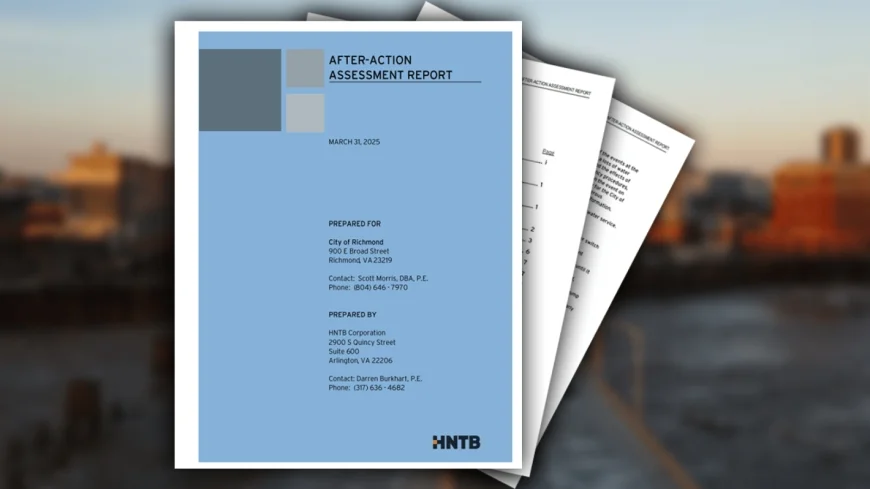Final After-Action report released for Richmond water crisis, cites severe lack of storm preparations

RICHMOND, Va. (WRIC) -- The final After-Action Assessment report has been released regarding the Richmond water crisis, citing a severe lack of storm preparation and hard-to-trace miscommunication among the incident's several root causes.
The City of Richmond released the report, conducted by the independent firm HNTB, on Thursday, April 3 -- exactly one month after the draft report was released on March 3 outlining initial findings and recommendations moving forward.
In the final After-Action report, HNTB faults two main factors for how severe the water outage became -- the operating status of the plant heading into the winter storm and a main power feed failure.
As the winter storm began, the Water Treatment Plant (WTP) was operating in what the report describes as "Winter Mode" -- meaning that the plant was reliant on one "critical component" instead of the several components used in "Summer Mode."
Richmond Mayor answers direct questions about city challenges at Q&A session
Additionally, the HNTB report confirms that WTP staff had a severe lack of storm preparation despite Youngkin declaring a state of emergency on Jan. 3 -- two days before the storm would occur on Jan. 5 and three days before the initial WTP outage would occur on Jan. 6.
"Despite these indicators of the severity of the incoming winter storm, multiple WTP staff members indicated that there was no discussion of storm preparation from leadership at the WTP," the report said.
HNTB also said that the "only preparations taken by staff were to fuel vehicles and backup generators and fill chemical tanks."
In terms of communication, HNTB details that a major miscommunication was made early on in the outage, which is suspected to have created a "false sense of security" within city officials.
Although the report does not indicate where the miscommunication began, HNTB said that someone relayed the false notion that the backup generator was started at the WTP, which was eventually relayed to the Plant Superintendent, the DPU Director and several other city officials.
Richmond’s former DPU director was fired after taking back her resignation
The other main areas of the WTP's operation that the HNTB report explores in depth include basement flooding and dewatering, storm preparation, power systems, staffing, training, operating procedures, asset management and maintenance.
According to the city, while some recommendations have already been implemented as a result of earlier investigations, further actions are expected to be taken following the $5 million recently invested in repairs and upgrades to the plant.
One of the recommendations that has already been implemented is the WTP now being permanently in "Summer Mode" -- meaning that it is operating with dual power feeds, which aims to prevent a single point of power failure from having as large an impact as in the January outage.
There have also been upgrades and scheduled reviews for protocols regarding emergency response for inclement weather events, emergency communications and inspections of equipment, fuel and chemicals.
According to the city, in addition to HNTB's After-Action report, they are also expecting an assessment from another independent emergency management consulting firm, which will provide further recommendations regarding the city's incident response procedures.
The HNTB's full final After-Action Assessment report can be read below.

 VENN
VENN 





